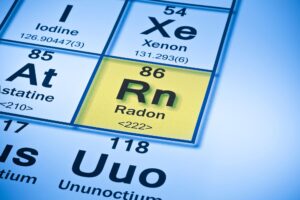Society of Motor Manufacturers and Traders (SMMT) writes open letter to London Mayor calling for rethink on ULEZ 2020 plans
The UK motor industry has called on the London Mayor to “rethink” plans for an ultra low emission zone (ULEZ) in the capital from 2020 to enforce “more ambitious” emission standards for both petrol vehicles.
Transport for London (TfL) and the Mayor are currently consulting with the public over plans for the ULEZ — which would see only vehicles meeting specified emission standards being able to enter the Congestion Charge zone — until January 9 2015.
SMMT said it would support a ‘more ambitious’ ULEZ from 2020The Society of Motor Manufacturers and Traders (SMMT) said it welcomed the ULEZ plans in principle but added that London should “set the benchmark for the world’s great cities” by implementing a scheme which “demands the very best in vehicle technology”.
In an open letter addressed to the Mayor, Boris Johnson, yesterday (December 16), SMMT chief executive Mike Hawes called for the ULEZ require the “latest European emission standards — Euro 6/VI — across all vehicle classes regardless of the fuel type”.
Current ULEZ proposals allow 2006-standard Euro 4 petrol vehicles and Euro 6 standard diesel vehicles, which he said was a “missed opportunity” as Euro 4 petrol cars will be 14 years old by 2020, even though Euro 6 petrol vehicles are on sale now and would be “reasonably affordable” to Londoners by 2020.
Advocating newer diesel vehicles as much improved for air pollution emissions compared to older models, Mr Hawes said that the industry had invested billions of pounds in the UK in developing the next generation of diesel engines to “reduce CO2 emissions and improve air quality”, and suggested that petrol vehicles should be forced to reach similar standards in the ULEZ.
Older diesel vehicle models are blamed for contributing high levels of nitrogen dioxide and particulate matter, but SMMT claims that diesel vehicles built today are the “cleanest ever made” and capture over 99% of particulates.
Mr Hawes therefore argued that amending the current ULEZ plans to enforce the latest EU emission standards would “encourage fleet renewal in the market, incentivise the uptake of the best in clean technology and create economic growth and jobs in London and the UK”.
Doing so, Mr Hawes wrote, would “accelerate improvements in air quality for all Londoners, safeguard jobs in the capital and ensure the ULEZ is simple for consumers to understand and endorse”.
Integrated approach
However, the SMMT chief also stressed that while road transport is a “significant contributor to ambient air quality”, any effort to address this issue must be part of an “integrated approach” tackling both air pollutants and carbon emissions.
He also said effective traffic management was needed to reduce congestion and ensure that new vehicle technologies “operate at optimum performance within urban context.
Last month (November 6), Mr Hawes also appeared in front of the London Assembly’s environment committee to discuss tackling diesel emissions in the capital, at which he said that diesel vehicles will “still be around for many years to come” (see airqualitynews.com story).
TfL
Responding to Mr Hawes open letter, Transport for London’s (TfL) managing director of planning, Michèle Dix, emphasised the air quality benefits of the current ULEZ plans and encouraged London residents to give their views on the proposals in the current consultation.
She said: “Improving the capital’s air quality is of paramount importance as it affects the health and well-being of every Londoner. That is why we are doing everything in our power to address emissions from road transport, with the introduction of an ultra low emission zone at the core of our work to improve the capital’s air.
“The ULEZ would significantly reduce the number of people living in areas of poor air quality — by 74% in central London, 51% in inner London and 43% in outer London. We would urge everyone who lives, works or travels in London to give us their views on the ULEZ public consultation, which runs until 9 January.”













London and the rest of the UK needs to decide what limit of PM2.5 is both acceptable and achievable. I suggest 7ug/m3 as annual average (present WHO recommendation is ten). Diesel has to go. Also, wood stoves and coal fires have to go. These two measures would create a huge dent in pollution levels in all our cities.
Mr Hawes said that “petrol vehicles should be forced to reach similar standards in the ULEZ.”
They are!!! The average petrol car emits about 0.001 g/kg PM2.5 (although injection engines might have higher emissions); Euro 4 limits NOx emissions of petrol cars to 0.008 g/km.
Euro 6 limits NOx emissions of diesel cars to 0.008 g/km, but the limit for PM2.5 is still 0.005 g/kg, so Euro 4 petrol cars without injection engines are cleaner than Euro 6 diesels.
Making the requirements the same in terms of emissions per km is much better idea than Mr Hawes misleading attempts portray an Euro 6 diesel as cleaner than an Euro 4 petrol car when it is nothing of the kind!
Particulate pollution in London is estimated to cause 7.2% additional mortality. That’s 3389 deaths annually, with 41,404 years of life lost. Are owner-drivers and companies prepared to compensate society for these deaths and lost years of life? (Particulate pollution this is distinct & separate from Nitrogen oxides etc.)